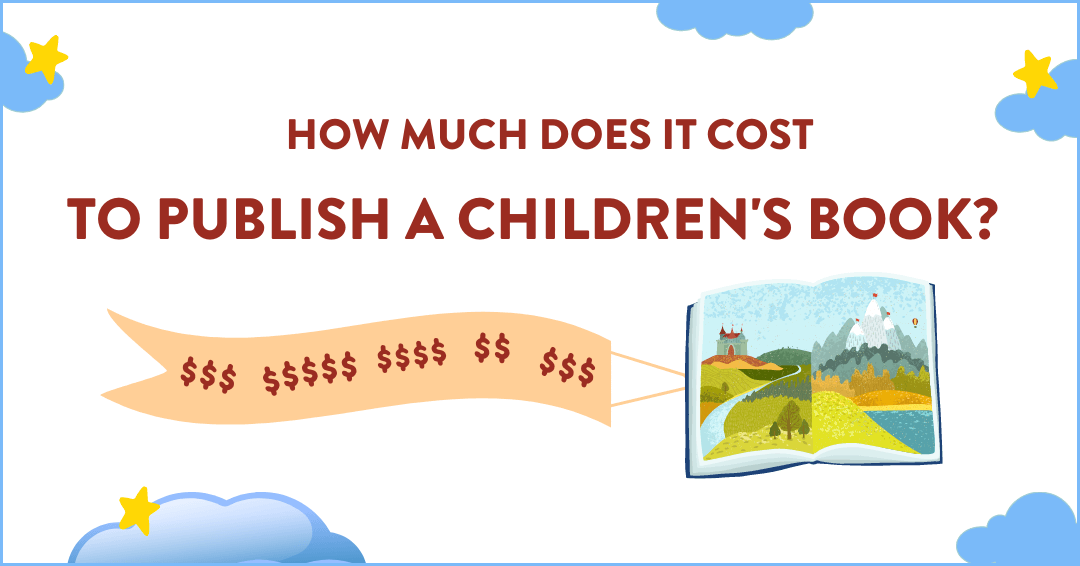
So you’re thinking about self publishing your children’s book, but you’re a little worried about how much it will cost you.
That’s totally understandable. You don’t want to get too deep into the process and then realize that you can’t afford to finish.
What I’ll do in this post is lay out the average costs to self publish a children’s book, based on over a decade in the industry helping children’s book writers from idea to finished product.
I’ve guided a ton of writers through the process, so I can tell you exact numbers on the high range (it’s pretty high!) but also the more budget friendly route.
And warning: this is a long article.
Because it takes a TON of work to be your own publisher.
If you’re just interested in having me do it for you, I have a service that will help: Bookfox Press.
Click that link and you can find out more about how I can help you with publishing.
Okay, back to self publishing. Let’s start with a breakdown of what you will need to spend money on.
- Editing (yes, you absolutely need an editor)
- ISBN Number
- Illustrations
- Cover Design
- Formatting
- Publishing
If you just want my free guide to how to write a children’s book, then click that link.
Otherwise, keep reading to find out the range of prices for each of those categories, and then some case studies with total calculations at the end.
Developmental Editing
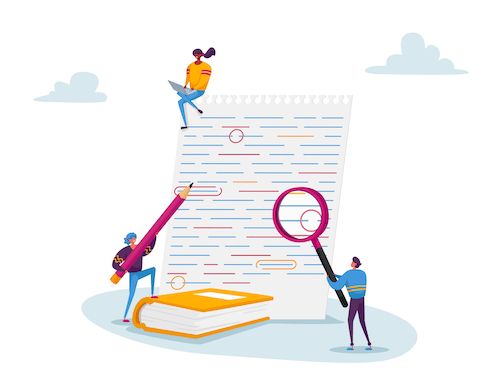
It would be best to get developmental editing. This is the type of editing where an editor gives you big picture feedback about your children’s book. Stuff like:
- Cut the first two paragraphs
- You don’t need the little brother in the story
- Change the ending to X or Y
- You need one more event in the middle of the book
Pricing on the low end for developmental editing is about $250 USD.
On the upper end, I’ve seen one editor charge as much as $800 for children’s books under 1000 words.
I’ve got years and years of experience in the industry, and have helped hundreds of authors from idea to published book, and my pricing starts at $450. My average is $525.
Developmental editors give you an essay that’s often longer than your book itself, talking about every part of your children’s book, such as characters, plot, dialogue, pacing, beginning/endings, and everything else that you’re doing well or that could be improved.
Working with a developmental editor is the best way to make sure children actually enjoy your book (that matters, you know!).
Copy Editing
But if you’re completely happy with your story already, you would still need a copy editor.
A copy editor will find all the little small mistakes that you’ve made in your children’s book.
I’m not talking about spelling errors or things that you could correct yourself. I’m talking about little mistakes that you could read the book multiple times and never ever see. For instance:
- comma usage
- capitalization
- extra spacing
- missing words
When a writer tells me they don’t need a copy editor, I chuckle to myself and then look at their manuscript. Without fail, I correct between 10 – 30 mistakes, even in a very, very short book.
A children’s book copy editor is generally cheaper than a developmental editor.
Pricing: On the low end it would be about $175 for a 1000-word book.
I wouldn’t trust anyone charging less than that, because the talent level of copy editors varies dramatically. I’ve given tests to people moonlighting as “copy editors” and they find less than 30% of the mistakes I put in there. Just because you have an English degree doesn’t mean you can copy edit. You have to know the Chicago Manual of Style inside and out.
High end for copyediting a 1000-word book would be more like $300.
Normally, editors don’t charge less if the story is only 500 words, say. They have a minimum for the job.
ISBN Number
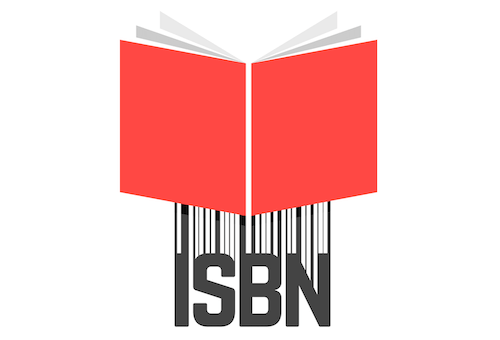
Do you need an ISBN number?
Honestly, it’s best to have one so you’re not locked into a particular media ecosystem.
For instance, if you self publish on Amazon, they will give you a free ISBN number. But there is a catch. You can’t use that ISBN number anywhere else — not Ingram Spark, not Barnes and Noble, not Apple Books.
And you can’t switch later. Your book will forever be locked into Amazon and you’ll never be able to publish it anywhere else (EVER).
But if you buy your own ISBN number, then you can publish across all these platforms and earn the most revenue per book.
You can buy one from Bowker.
Buying a single one is $125, which is rather expensive.
Buying a pack of ten is $295 USD.
You might be thinking: I only have one book, so I’ll only buy one.
But surprise! You need an ISBN for every format of your book. If you’re planning on multiple versions, such as:
- Hardback
- Softcover
- Audio
- Ebook
Then you would actually need FOUR ISBNS, one for each of those formats!
So I usually recommend that people buy the $295 pack. But if you’re planning on publishing only a softcover children’s book, then just pay the $125.
Very few children’s books are audio books, though, because they are so visual, and very few are ebooks either, so you usually don’t need to pay for ISBNs for those.
I would recommend NOT paying for the bar code. There are websites that can create this bar code for free, once you have your ISBN number. So don’t both wasting money on that.
If you want to learn how much you can MAKE when publishing a children’s book, check out my five case studies of authors I’ve worked with, and a breakdown of their expenses and revenue.
Illustrations
Illustrations are the biggest expense for your children’s book. And if you have money to spare, you should direct the bulk of it here, because investing in this part of the book will make the biggest difference.
Artist Friends: Free
I’ve seen a lot of children’s book authors use a friend, and pay them either nothing or a nominal fee.
If you have a truly talented friend, this can work out, but in general, I’ve seen the result hundreds of times and it ends up a disaster.
The trouble is that most artist friends haven’t illustrated a children’s book before, and so they don’t know the genre well. Maybe they do oil painting of landscapes, but it’s a very different skill to draw characters and actions and dialogue bubbles and sounds.
It’s a little like asking your swimmer friend to run a marathon. Just because they’re an athlete in one sport doesn’t mean they can play other sports well.
Split Revenue
Authors always dream of splitting revenue with the illustrator. That way they don’t have to pay anything up front.
But I don’t know any illustrators who do this.
Every illustrator would prefer all their money up front, and no backend revenue. They don’t want to work for months and months and then have your book sell 50 or 100 copies and they earned pennies per hour.
Illustrator Hacks: less than $1000
You don’t want to pay less than $1000 dollars, because usually you’ll end up with cut-and-paste illustrators.
These are illustrators who download pieces of pre-made illustration and pre-made backgrounds, and they’ll move them around so it vaguely resembles your story. What’s more, you’re not even getting original artwork that they made, but more of a Frankenstein book cobbled together from hundreds of other sources.
If you wrote an original story, you need original artwork.
Can you hire someone like this?
Yes, but the illustrations are kind of dodgy. It simply doesn’t look good. If you set these books next to other self published books, it would be obvious in a second that you hadn’t hired the right illustrator.
Cheap Illustrators: $1000 – $1500
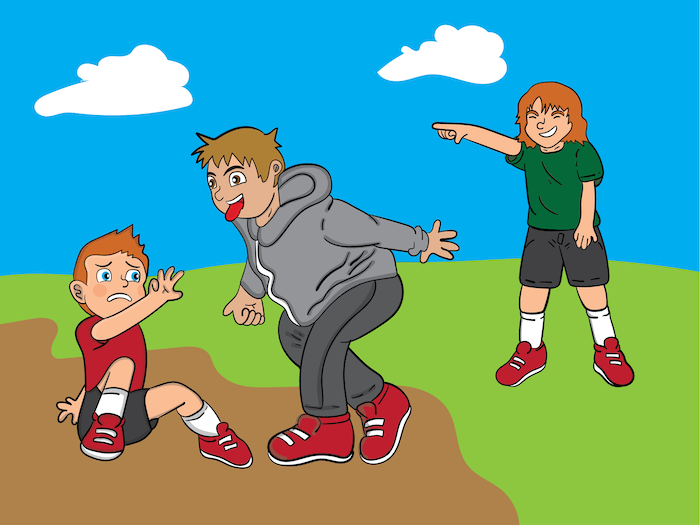
A bargain basement price for illustrations is usually $1000 – $1500.
This is usually finding an illustrator working from abroad, in a second-world or third-world country. You can find these type of illustrators on sites like Upwork and Fiverr.
Look at the example above. This type of illustration doesn’t include much in the foreground or the background. The figures are simply drawn. The dimensions are slightly off — the figure to the right looks like he’s floating rather than standing. The clouds are very simple and resemble one another.
To save time the illustrator had them all wear the same type of shoe.
But if you just want to get your book out there, and can’t afford much, this is probably the route you should go.
Skilled Illustrators: $2,500 – $3,500
If you want to work with a decently established artist who is talented and has done children’s books before, and resides in a first world country, then you’re talking about $2500 – $3500.
I’ve worked with a number of illustrators who charge about this much. And they do solid work.
When you get to this level of illustrator, they are often booked with other projects, and you might have to wait a month or two. Also, they usually take 2 – 3 months to finish the job, because they’re including a ton of detail and beauty inside your artwork. So you have to be more patient at this level, but it’s worth it.
You can usually find these illustrators on sites like Upwork, but toggle the button that says, “U.S. only.”
Pro Illustrators: $5,000 – $12,000
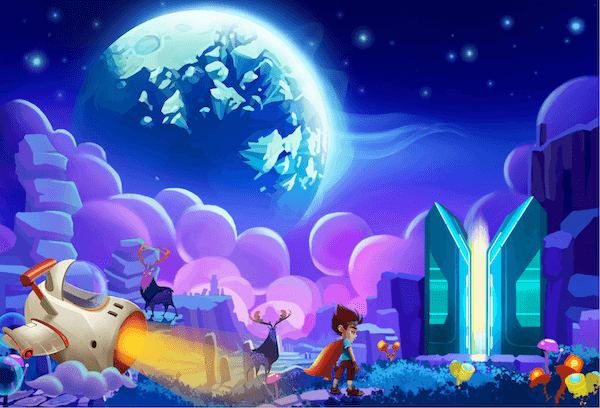
Now, say you have some deep pockets and you want your children’s book to look super professional. I mean, someone will think that it’s published by a traditional publisher.
In that case, you’re talking about north of $5,000 per book. And it might take them 6 months or more to create.
But you get real artwork, stuff that’s good enough to hang on a wall. Details that are ornate and creative. Images that take your breath away.
At this level, it’s no longer a writer dictating to the illustrator what to draw, but more of a collaboration. They should bring as much creativity to the table as you do.
To find these type of illustrators, look at SCBWI’s Illustrator Galleries. Some of these illustrators refuse to work with self-published authors (they prefer publishers alone), but some are seeking freelance jobs.
Publisher-Level Illustrations
I have a friend who draws artwork for children’s books, and he charges publishers $30,000 USD per book.
If you’re a famous illustrator, you can get even more money than that — I’ve heard of deals as high as $50,000 – $60,000 USD for a book.
But don’t worry! You actually can’t hire these people. They work for publishers alone and aren’t interested in freelance work.
They usually take 6 months to a year to draw a book, and not only do they get paid a good amount of front, they get a percentage of the profits as well (royalties). Usually the illustrator and the writer split royalties down the middle.
The dirty secret in the children’s book industry is that illustrators get paid much more than the writers do.
Why are Illustrations so Expensive?
Say you walked up to an artist and told them you wanted them to create 26 custom illustrations for you for $500.
It sounds crazy, doesn’t it?
A children’s book requires either 13 two-page spread artworks, or 26 pieces of artwork. That’s a ton of art!
And plus, if you want revisions, that’s even more work for them.
I mean, if you commissioned an artist to do a single work of art for you, they would normally charge at least a couple hundred dollars, so to do 13 big ones or 26 one-page ones is a ton of work.
Most illustrators usually spend at least two – six months doing all this work, so it’s not like they’re making a ton per hour.
Pay per hour or per project?
Most of the illustrators on sites like Upwork and Fiverr pay per hour. This is easy for them, because usually you dictate revisions to them as they go, and it all fits into their fee. Also, if you say you want them to add more detail, then you know it will just cost a bit more.
Usually I ask up front: what is the average amount of time it takes you to illustrate a children’s book?
And they’ll say 4 – 6 hours per 2-page spread, and I do the math and can calculate a roundish number for the price.
On the other hand, some illustrators offer a set price for illustrations. My own recommendation would be to specify how many revisions you get with a flat fee.
There is no right or wrong choice here. It’s more important to find the right illustrator than to pick a particular method of billing.
Cover Design
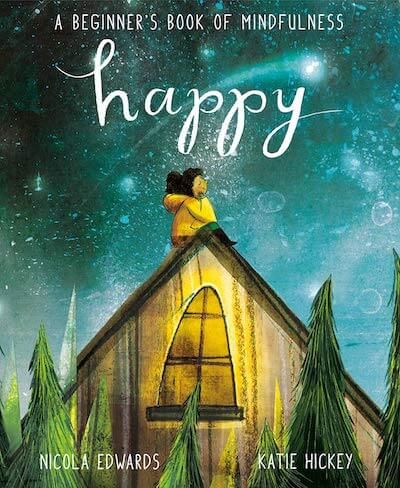
I always recommend that the illustrator does the cover design as well.
So if they’re quoting you a price for 13 full-page spreads (this is 26 pages, which is standard for a children’s picture book), then say: Could I pay you for 14 full page spreads and get you to design the front and back cover?
Don’t forget — you need a front AND back cover design.
So lump this price into the price for the illustrator.
If you try to hire someone else, there’s no guarantee they can match your illustrator’s style.
Lastly, make sure that the cover design has different dimensions for different platforms. For instance, Ingram-Spark’s paper weight is heavier than Amazon’s paper weight, so that means the cover design needs different dimensions along the spine. Otherwise the colors of the spine will bleed over onto the front or the back cover.
Formatting
When I say formatting, I’m meaning interior book design.
Another word for this is Typesetting.
Now for a children’s book, you want an illustrator who can add text to the images. You don’t want to hire a separate person for that. So make sure when you hire your illustrator, you ask: you’ll incorporate the words onto the images, won’t you?
If your illustrator doesn’t do that, then you’ll need to find a graphic designer. This is what you look for when you’re looking for a graphic designer:
- Someone who is a wizard at fonts (fonts are SO difficult to master).
- And make sure they know InDesign, because they’ll use that to add text to your illustration.
- Ask whether they’ll give you a ready-to-print PDF.
This means you’ll want them to do the Title page, the Copyright page, and add blank pages in the beginning and end.
Otherwise you’ll need to hire someone to do this (probably for about $150 – $300, on Upwork or Fiverr), or figure out how to do the PDF on your own.
Publishing
Here’s the good news about the publishing side: it’s free!
At least it’s free if you choose to do all the heavy lifting.
Basically, once you have that PDF with the:
- Text
- Illustrations
- Back matter and front matter (copyright page, title page)
Then you’re ready to go!
The question now is what sites you upload to. Barnes and Noble? Apple Books? Ingram Spark? Amazon? Draft2Digital? Smashwords? Lulu?
It starts to get confusing.
Now, some authors struggle to do all the legwork of everything I mentioned above. It’s understandable. It sounds so easy when I explain it, but when you actually start to move through the process, you run into roadblocks and get confused and there are a hundred websites all saying slightly different things.
First time authors can get lost in the weeds of formatting, ISBNs, hiring an illustrator, uploading to multiple platforms, etc.
So Bookfox offers a self-publishing assistance package, called Bookfox Press.
We take care of things like:
- Finding your illustrator
- Helping you through the illustration process
- Getting your ISBN and barcodes
- Making sure your cover is formatting correctly for different platforms
- Uploading your book to multiple platforms so you get maximum revenue
And many more things like that.
Click the Bookfox Press link and you can contact us and ask any additional questions.
Marketing

Marketing is a tricky one to estimate costs.
If you’re driving to local schools to read your book, you have to calculate:
- Gas costs
- Pre-printing costs (you need to have books on hand, and usually you get these at an author-discounted rate of half off)
- To accept credit cards at local events, the credit card processor will charge you 3.5%
- Supporting materials: do you have a sign? Do you need a puppet for your performance? Do you want a headshot or informational brochure, in which case you would need to budget for those printing costs?
Think about going to festivals and conferences.
- Cost of airline ticket or driving
- Cost of festival/conference entrance fee
- Cost of renting a booth
- Booth Tchotchkes (little giveaway items, like branded pencils or toys that resemble your books’ character)
Most children’s book authors set up websites to help promote their book.
For instance, look at kidscanclub.com, which helped create a community of kids around the message of the children’s book “Clementine Gets Unstuck.”
Or look at Liz Somerville’s website for her children’s book series about Rocco the Buffalo.
Lots of authors create websites not only to help market their book, but also to help promote the values and lessons that their book conveys. For instance, if your book is anti-bullying, authors will set up an anti-bullying website where kids can sign up to pledge to stand up against bullying.
Obviously the cost of website building varies widely. You can do something on Wix for a few hundred dollars, or you can hire someone for a few thousand dollars. If there is interactivity, such as a community, or if the website needs to be accepting money to buy the book, then the pricing goes up from there.
If you want guidance with your marketing, I created a course called “Your First Bestseller” that guides authors through the marketing and promotion process.
Hiring a Freelance Publicist
You could also hire a freelance publicist to help you with marketing.
But I warn you — these people are expensive. I hear quotes all the time from $5,000 – $30,000.
Still, a publicist can open doors that you can’t even knock on. They can submit your name and book to radio stations, podcasts, television shows, and magazines. When you hire a publicist, you’re really hiring a rolodex of relationships. This is a person who is known in the industry, and then the gatekeepers of media will listen to them when they say: you should have this person on your show.
But a publicist can’t help you if your book isn’t marketable. In other words, it really depends on the concept of your book. Some books are of the moment, capture a zeitgeist or a trend, and any publicist can move copies.
Other books have nothing to distinguish them, other than a nice story and nice characters — there is no demographic to target or any trendy topic they’re addressing. In that case, the best publicist in the world would be a waste of money because they won’t be able to help you sell a single book.
Case Studies
These are three real authors who published their books. I’m going to use fake names, but these are real amounts for what they spent on their children’s books.
Susan
Susan invests a good deal in her children’s book.
Developmental Editing: $525
Copy Editing: $300
Illustration: $7,700
Publishing and Distribution: $2500
Marketing: $1,500
Total Cost to Publish a Children’s Book: $12,525
Mark
Mark has a limited budget, so he tries to keep costs down.
Children’s book course: $149
Copy Editor: $200
ISBN: $0 (just publishes on Amazon)
Illustrator: $1500
Publishing: Amazon, so free
Total Cost to Publish a Children’s Book: $1849
Amy
Amy has a medium size budget, and picks expenses wisely.
Developmental Editor: $450
Illustrator: $2500
ISBN: $125
Publishing: $1500
Marketing: $500
Total Cost to Publish a Children’s Book: $5075
The cost of Bookfox Press is very competitive with these average costs, plus we do all the work for you! So consider us for your publishing needs.
Hope that helps!
If you want to look at more case studies, check out my post on how much money you can make with a children’s book.
If you have any questions about the process, please ask below in the comments!
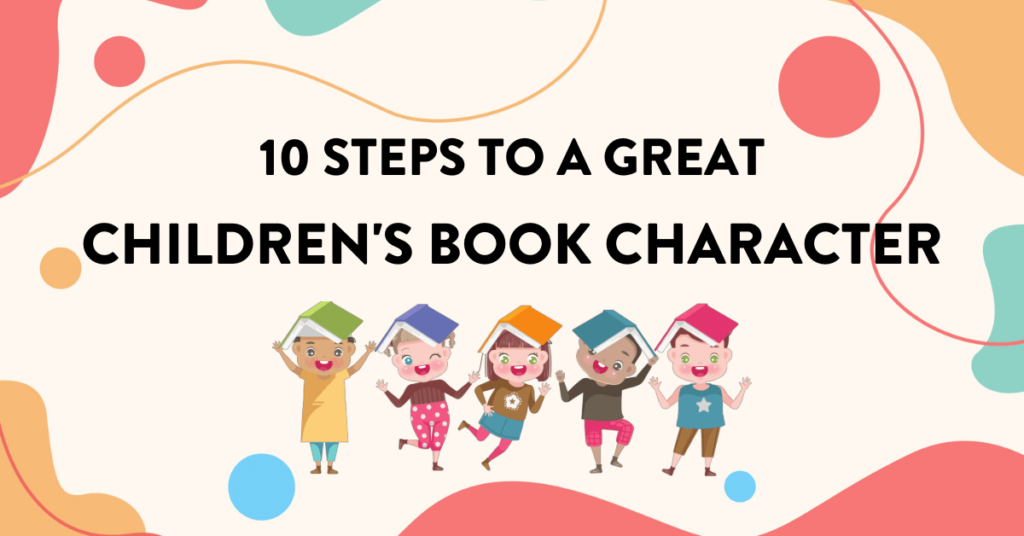
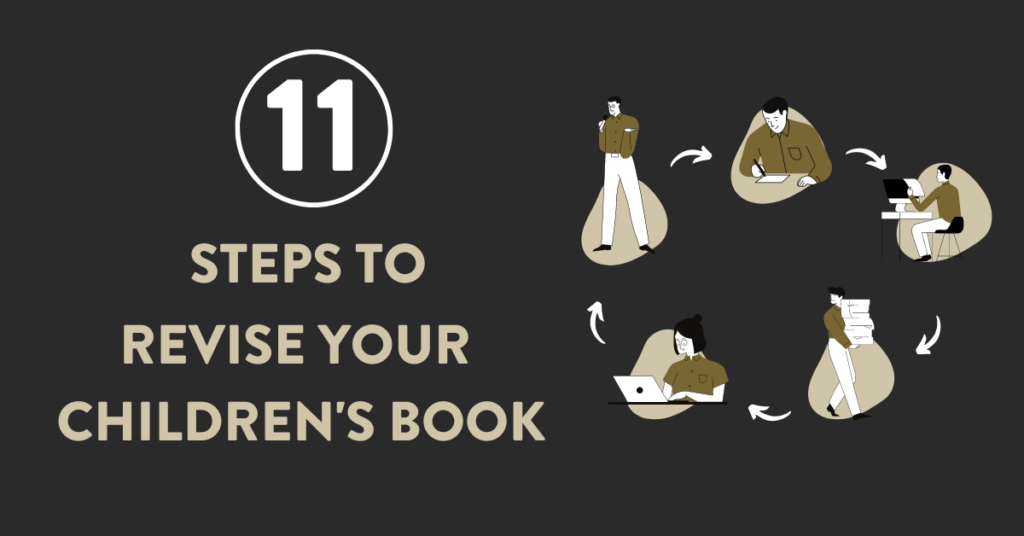

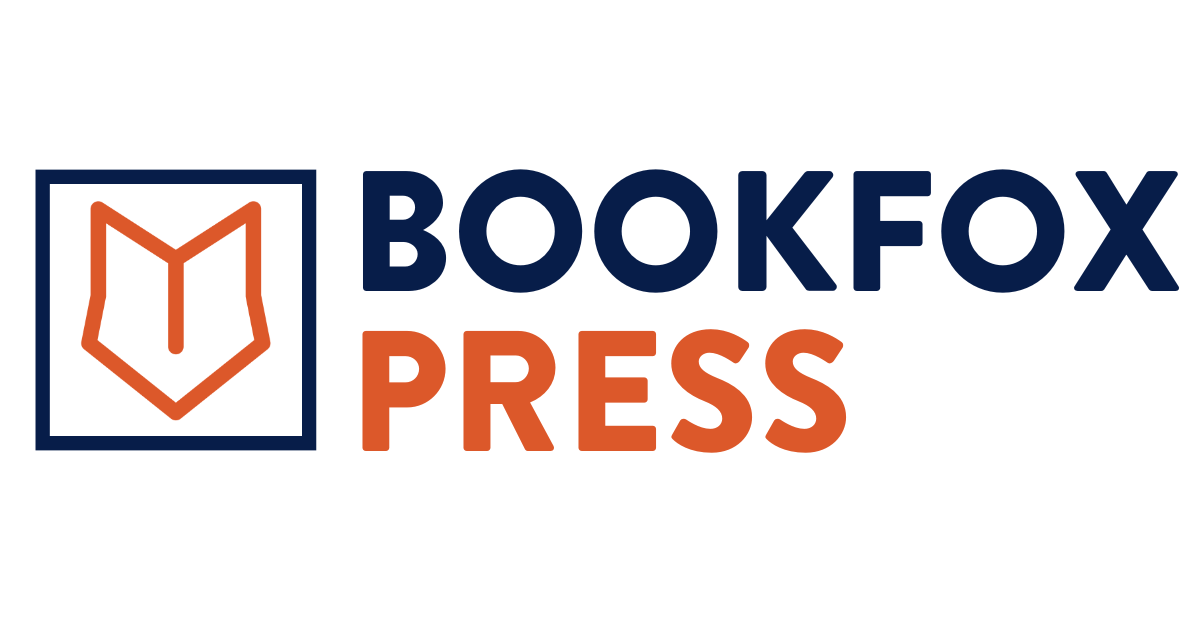
8 comments
I love your site and I see many areas of writing and publishing that could have saved me a lot of time. My children’s book is near completion, but needs polishing, and probably some expert revision; what I would like is editing and post-completion guidance, not the entire course. Would it be worth it to buy the entire course?
Hi Joyce, I think probably 2/3rds of the course will be super helpful for you still, and the first third will still help you revise (and help you with the next book).
My daughter wrote a book and wants it illustrated and published. I need someone who can do this
Check out Bookfox Press to see if we might be a good fit.
I’m about to write a book about our two pet hedgehogs, very cute, funny and adventurous . I need help with the pictures, demonstration and etc, I already have a story line, I just need help to complete it and get it published without costing a fortune,
Sincerely,
Larry Durst
Hi!
My children’s picture book and cover is written, edited and illustrated. I just need someone to help publish it. Do you offer a smaller package for this?
Please I want you to assist me in writing original children story book that will suit 3 to 5years old. My plan is to sell on Amazon.
please , I will give you the details of the project via email
Hi, if you would like help writing your children’s book, I would recommend taking my course, “Two Weeks to Your Best Children’s Book.”